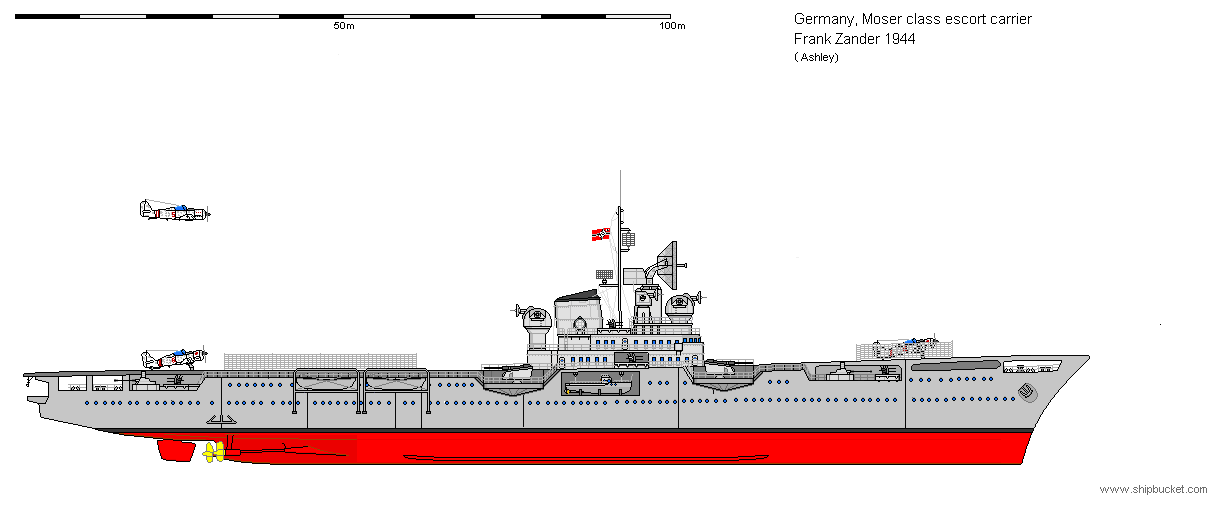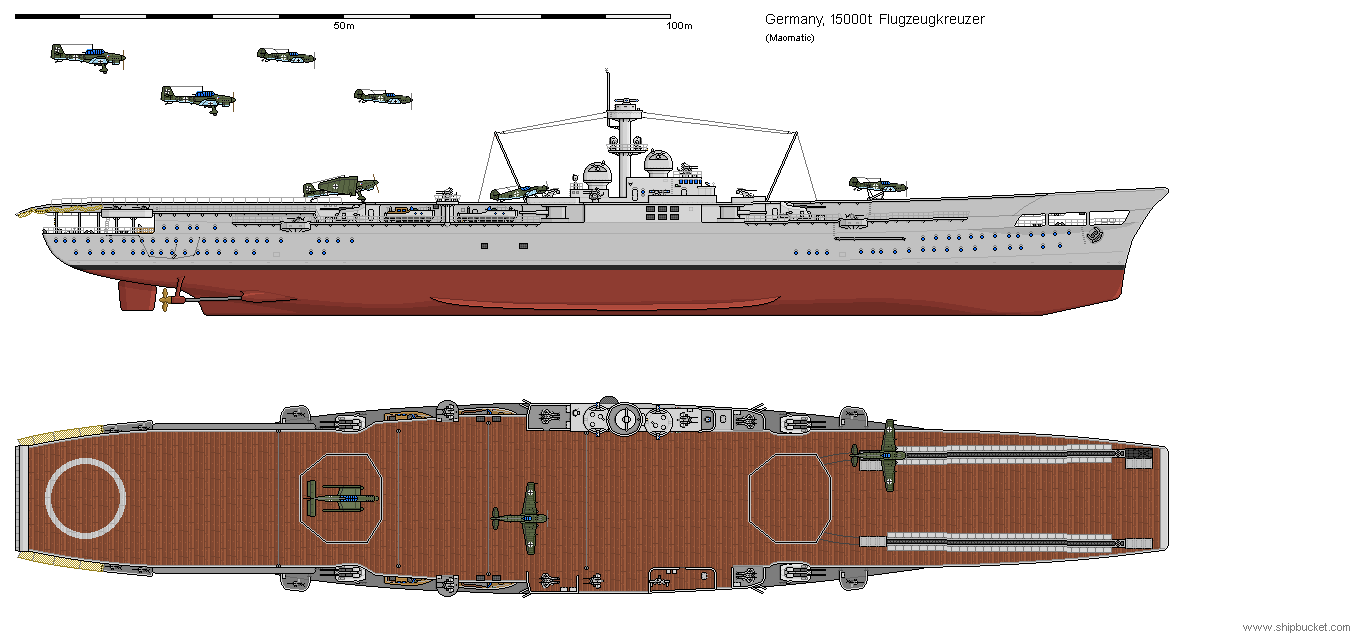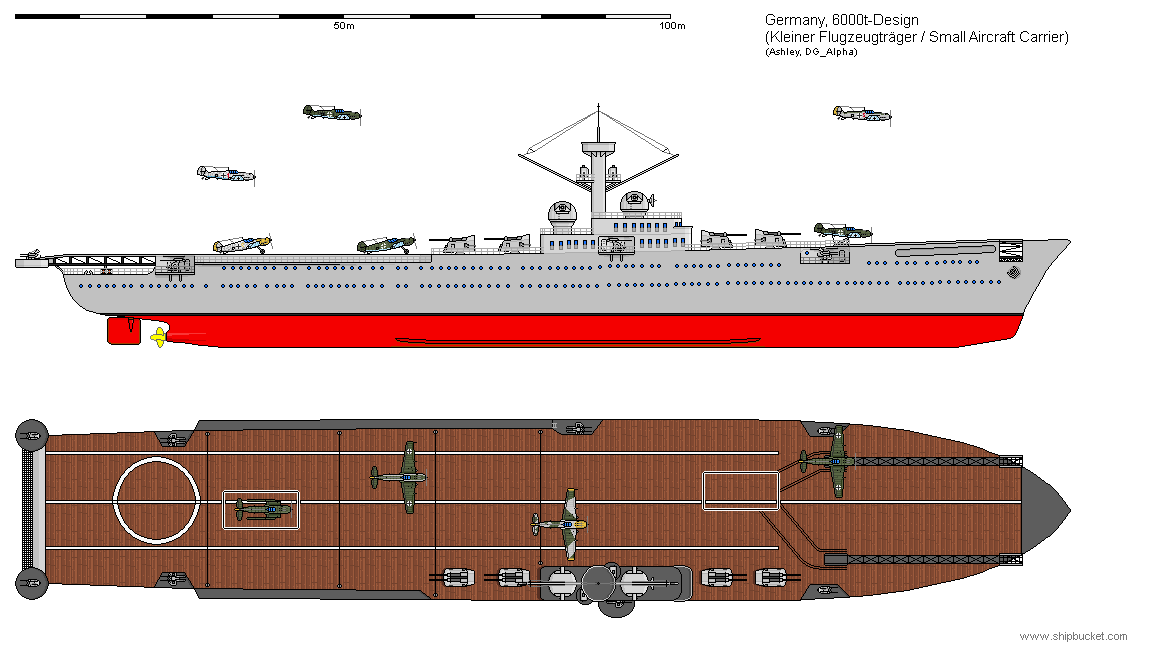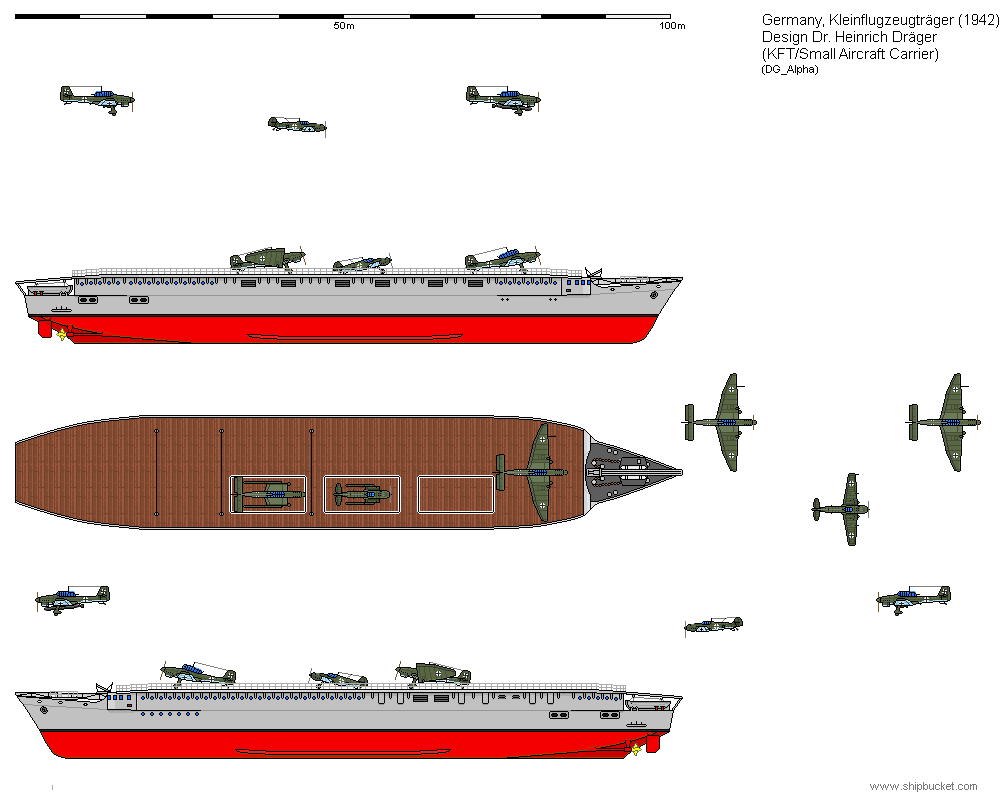
KM Weser & Goering (CVE/CVL-from-1942)
Back to Germanic States Navy page:
German spies (or Naval Attaches) to the various major powers, up till the outbreak of war, kept their eyes firmly on the building projects of those countries naval yards. The advent of the smaller 'escort' and 'light' carriers as shown by the British/Australis Hermes and Albatross classes was firmly in mind of the German designers. The Kriegsmarine however could find no use for the smaller carriers and their first 8 or so ships were all of the large fleet sized vessels.

The only reason I can think of for building smaller light fleet carriers is for Germany to want more fighters for combat air patrols round the fleet units to leave the fleet carriers for strike duties. These ships filled with Fw-190's and their variants would have been useful for those duties. On the other hand if Germany had been able to take the British Isles and Ireland they would have needed light fleet and escort carriers. Many things needed to change for the Germans to have much of a chance of winning, the biggest being the acquisition of Spain, by treaty or direct action. Spain was the key to German success. Cut off the Mediterranean to the British through Gibraltar and North Africa would fall to the Germans. The British would not have been able to sustain the Egyptian fronts through the Red Sea. Like dominos the rest would have followed, Middle East and Turkey, across and through India to meet the Japanese on the borders of India and Burma. With Russia surrounded there would be no last minute defence of Moscow. The Germans could take the Caucasus and Caspian areas from Turkey. Spain is definitely the key.
The Goering class were converted from the hulls of light cruisers with a
single hangar with the flight deck mounted on top. Armament was carried in
sponsons mounted to the side of the hangar. Two lifts were fitted, one at either end
of the hangar and one catapult was fitted.
| Displacement | 11,700 tons std, 14,400 full load |
| Length | 613.5 ft |
| Breadth | 64 ft (hull) 82 ft flight deck/sponsons |
| Draught | 24.5 ft |
| Machinery | 3 shaft mixed steam and diesel propulsion. 2 shaft Steam Turbines 50,000shp 1 shaft diesel engines 25,000ihp |
| Speed | 32 knots |
| Range | 9000 miles at 18 knots |
| Armour | 2.6" main deck, 2.6 side, 3.5" magazines |
| Armament | 8 x 4.1" (4x2) 10 x 37mm (10x1) 22 x 20mm (3x4 10x1) |
| Aircraft | 24 |
| Torpedoes | nil |
| Complement | 1100 |
| Notes | KM Goering KM Goebbels KM Hess KM Reader |
Miscellaneous Aircraft Carrier Projects.
The Germanic States could never hope to produce enough aircraft carriers to
fight the Royal Navy. The combined Commonwealth and then plus the North American
forces just outnumber the Germanic States Naval forces that there can ever only
be one outcome to any fleet battle (which I will write in the near future),
annihilation for the Germanic States forces.
The GS Navy never worried about that and produced endless designs for smaller
aircraft carriers for, escort carrier duties, merchant raider carriers, high
speed light carriers, converted cruisers to seaplane and aircraft carriers. The
light fleet carrier from cruisers was the only one that could be taken
seriously, as the incomplete heavy cruiser Seydlitz was the only project
advanced.
Some drawings of the projects follow:
Late war escort carrier to cover convoys of ships bringing the ore from Norway
across the coastal waters of Norway to Germanic States. The Navy could not rely
on the Airforce to do the job of protecting these valuable cargoes.

The light carrier Seydlitz, below, from a heavy cruiser hull.

Below: expendable merchant raider aircraft carriers to perform the role the
earlier Armed Merchant Cruisers had done.

Smaller version of the expendable merchant carrier.

The designs got smaller and smaller as resources became fewer and scarcer.

Below: the proposed design for converting the Leipzig to a seaplane carrier. A
waste of materials, when the GS Navy was so short of cruisers to begin with.
